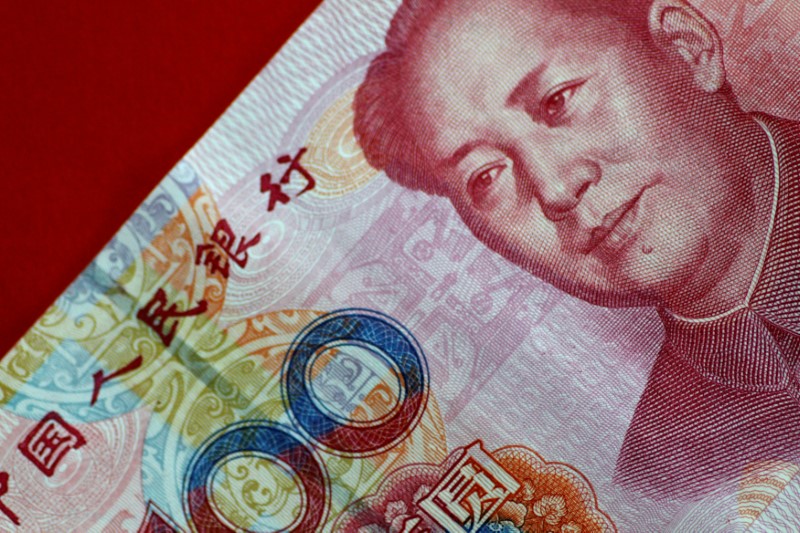By Yoruk Bahceli
LONDON (Reuters) - China's yuan climbed to its highest level since July on Tuesday and the Japanese yen plumbed eight-month lows as the U.S. Treasury Department reversed its decision in August to designate China as a currency manipulator.
The Treasury Department's new report on currency manipulators could help explain the reason for the Swiss franc surging to a 33-month high against the euro, some analysts said. [L8N29J36G] Washington included Switzerland on a watchlist, although other market participants said it had been expected and broader safe-haven flows were behind the franc's move.
The announcement on the yuan came as Chinese Vice Premier Liu He arrived in Washington ahead of Wednesday's signing with U.S. President Donald Trump of a preliminary trade agreement aimed at easing tensions between the two countries.
"Washington's decision to lift its designation of currency manipulator on China has added to the positive mood that has been already in place ahead of the signing of the trade deal," said Minori Uchida, chief currency strategist at MUFG Bank.
People familiar with the negotiations said its removal was an important symbol of goodwill for Chinese officials.
China has also pledged to buy almost $80 billion of additional manufactured goods from the United States over the next two years as part of a trade war truce, according to a Reuters source.
The dollar rose as much as 0.3% against the Japanese yen to 110.22 yen , its highest since late May versus a currency that tends to weaken when investors are buoyant. It last stood at 109.97 yen.
In onshore trade, the yuan strengthened to as high as 6.8731 per dollar , its strongest since late July. China's central bank set the midpoint of the yuan's daily trading band at 6.8954 per dollar on Tuesday, its strongest fixing since Aug. 1.
The offshore yuan also firmed to its strongest level in six months, hitting 6.8662 yuan before easing off .
Chinese forecast-beating trade data also helped to boost optimism about the economy and the yuan.
Despite the optimism, some analysts said there were signs of a bid for safety.
The Swiss franc rose to its strongest since April 2017 at 1.0763 against the euro (EURCHF=EBS), up nearly 0.5%. It rose 0.4% versus the dollar .
Some analysts said this reflected nervousness, as risky emerging market currencies such as the South African rand and Turkish lira fared poorly.
"The interesting question is how long can this optimism last, how much further can it go. A lot surely has to be in the price," said Jane Foley, senior FX strategist at Rabobank.
"If we were to get another rise in tensions between the U.S. and China and if we were to turn our attention to phase two (of the trade deal)... it's very likely that we will see the renminbi falling again," Rabobank's Foley said, adding that the currency might face a low at the 7.18 level hit in September.
In Europe, sterling weakened further on Tuesday, hitting a seven-week low against the euro at 85.95 pence before recovering. (EURGBP=D3)
The currency has come under pressure from weak data releases, raising the chances of a cut to interest rates by the Bank of England. Money markets forecast an almost 50% probability of a cut at a meeting on Jan. 30.
The euro was mildly supported by risk-on sentiment, remaining off a two-week low of $1.10855 (EUR=EBS) hit on Friday, last trading at $1.1124.

The dollar index gained 0.1% to 97.43 (DXY).